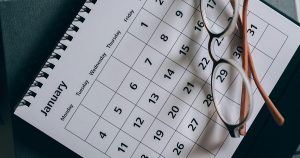This article is playful look at the origin, etymology, and psychology, of the word ‘debt’. The article is intended to be a humorous and poetic dig at the word that has become central to our discussions, and as a historical reference to deepen our understanding. Of course, one of the underlying primary goals we work towards on a daily basis is getting into the housing or investment market, increasing your equity and building wealth through your various property strategies, and our debt reduction methods are central to this end.
“Death is the debt that all men pay,” wrote Euripides, with the elegant fatalism of a tragedian who understood that obligation is the true currency of human existence. And if death is the final debt, then debt—monetary, moral, existential—is death’s daily rehearsal. It is the invisible chain that binds mortals not just to money, but to time, to labor, to promise, to guilt.
The word debt itself comes from the Latin debitum, meaning “that which is owed,” from debere, “to owe.” But its root, habere — to have or hold — is curious. It suggests that to be in debt is to have held something you should not have, something that belongs to another. A trespass. A theft in slow motion. Debt is thus not merely the absence of money; it is the presence of obligation.
In religious texts, debt and sin are often interchangeable. The Lord’s Prayer, as rendered in some translations, pleads, “Forgive us our debts, as we forgive our debtors,” a line that bleeds both economic and moral meaning. In the ancient world, a man in debt could be imprisoned, enslaved, stripped not just of possessions but of personhood. To owe was to be less than whole, a body mortgaged to its creditor.
In modern finance, we are told that debt is a tool. A mechanism for growth. A way to leverage the future. But this is a clever rebranding. Debt still retains its ancient power — it marks a deficiency, a gap between desire and means. Between what we have and what we cannot yet afford. In a society where credit is necessary for basic survival—for homes, education, transportation — debt is not a choice; it is a rite of passage.
But it is a burdensome rite. Psychologically, debt creates a constant duality: a present self who enjoys, spends, lives — and a future self who must repay. Every dollar borrowed is a note passed to a future version of you, written in the language of urgency, to be read in the language of consequence. The debtor lives in two times at once: the now of acquisition and the later of reckoning.
Nietzsche, in On the Genealogy of Morality, ties the origin of guilt itself to the notion of debt: “Guilt derives its origin from the material concept of debt.” The debtor, in this view, is not simply someone who owes money, but someone whose very being is in arrears. The creditor — be it a bank, a government, or God — is the one who demands recompense. To be in debt, then, is to live under the shadow of that demand.
What makes debt especially insidious in our age is its invisibility. Unlike chains or prison bars, it does not appear at the door. It appears as numbers on a screen, as fine print on a contract, as a red bubble in a banking app. It is administered not with whips, but with algorithms. Not with guards, but with interest rates. And yet it dictates behavior as powerfully as any warden: people stay in jobs they hate, delay children they want, forfeit dreams they cherish — all because of debt. It narrows the aperture of the possible.
But debt also flatters. It tells you that you are credit-worthy. That someone, somewhere, believes in your capacity to repay. It is a dangerous compliment, like being trusted with a loaded gun. And in that way, debt is a seduction. It invites you to imagine a future version of yourself that is wealthier, more successful, more capable than you are now. It is a financial fantasy that demands real payments.
Some debts are noble — student loans, small business loans, medical costs. Others are more suspect — fast fashion, impulse buys, interest-free now, regret-laden later. But all debts share a moral undertone: that you must become the kind of person who can return what you have taken. This is the emotional toll of debt. Not just repayment, but transformation.
And what of those who cannot repay? In ancient cultures, this was often met with ruin or punishment. In modern capitalism, it is met with a different kind of exile: a ruined credit score, a foreclosure, a quiet refusal of the next loan. You are not jailed, but you are marked. Your name enters a system. A sin accounted for in spreadsheets.
In this light, debt becomes a theology. It offers redemption (you can be free of it), salvation (your credit can be rebuilt), damnation (default), and ritual (the monthly payment). You tithe not to a deity, but to a financial institution. And like all theologies, it requires belief — specifically, belief in the system’s fairness, in the promise of eventual liberation.
But liberation is rare. For many, debt is a lifelong condition — a shadow that follows them from student loans to mortgages to medical bills to funeral expenses. We are born into it, die with it, and sometimes inherit it. The “debt that all men pay” is not just death itself, but the costs accrued on the way to dying.
So what can be done? Perhaps it begins with recognition. Debt is not merely financial — it is philosophical, emotional, existential. It is a mirror held to our desires, our fears, our compromises. It is the invisible chain we carry as citizens of the modern economy.
And maybe, just maybe, by seeing the chain, we begin to loosen it.















